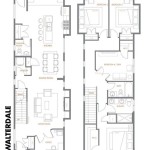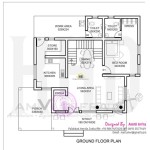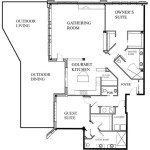Easy DIY Bat House Plans
Bats play a crucial role in the ecosystem, serving as natural pest control by consuming vast quantities of insects. Providing them with suitable roosting habitats through bat houses can encourage their presence in your area. Building a bat house is a relatively straightforward project that can be completed with basic tools and readily available materials. This article provides easy-to-follow plans and instructions for building a simple, effective bat house.
Key Considerations for Bat House Design
Before starting construction, understanding the key elements of effective bat house design is crucial for attracting bats and ensuring their comfort and safety.
- Ventilation: Bats require adequate ventilation. Incorporating small gaps between the front panel and the back of the house facilitates airflow.
- Landing Space: A rough landing surface, achieved by grooving or scoring the landing area, helps bats grip onto the house and enter easily.
- Interior Chamber Size: The interior chamber should be narrow, mimicking the crevices bats naturally roost in.
- Material: Untreated, rough-sawn wood is the ideal material. Avoid using treated lumber as the chemicals can harm bats.
- Color: Darker colors absorb heat, which is essential for maintaining the proper temperature inside the bat house.
Materials and Tools
Gathering the necessary materials and tools beforehand will streamline the construction process.
- Exterior-Grade Plywood: Use ½-inch thick exterior-grade plywood for durability and weather resistance. Choose a sheet large enough to accommodate your chosen design dimensions.
- Wood Screws: Use corrosion-resistant exterior-grade wood screws.
- Caulk: Seal any gaps or cracks with exterior-grade caulk.
- Saw: A circular saw or jigsaw will suffice for cutting the plywood.
- Drill: Use a drill with a screw-driving bit for attaching the pieces.
- Measuring Tape and Pencil: Accurate measurements are crucial for a properly functioning bat house.
- Safety Glasses and Gloves: Always prioritize safety when working with tools and materials.
Step-by-Step Construction Guide
These instructions outline the construction of a simple, single-chamber bat house.
- Cutting the Wood: Cut the plywood according to your chosen dimensions. A common size is 24 inches tall, 16 inches wide, and with a depth tapering from 3 inches at the top to 1 inch at the bottom. Cut a separate piece for the back panel, slightly larger than the front to allow for overlap and mounting.
- Creating the Landing Area: Roughen the surface of the landing area, which is the lowest several inches on the front panel, by scoring it with a saw or other roughening tool.
- Assembling the Chamber: Attach the side panels to the front panel using screws, ensuring tight seams. Then, attach the top and bottom pieces, creating the enclosed chamber.
- Attaching the Back Panel: Attach the back panel to the sides and top, allowing for a ¼-inch gap between the back panel and the front panel for ventilation. The back panel overhang will be used for mounting.
- Sealing: Seal any remaining gaps or cracks with exterior-grade caulk to prevent drafts and moisture infiltration.
- Finishing: Paint the exterior with a dark, non-toxic, water-based paint to help absorb heat.
Mounting the Bat House
Proper mounting is essential for bat occupancy.
- Location: Mount the bat house on a building or pole, at least 15 feet above the ground, in a location that receives at least 6 hours of direct sunlight per day. Avoid locations near bright artificial lights.
- Orientation: Face the bat house south or southeast to maximize sun exposure.
- Mounting Hardware: Use appropriate mounting hardware for the chosen surface, ensuring secure attachment.
Maintenance and Monitoring
Regular maintenance ensures the longevity and effectiveness of the bat house.
- Cleaning: Clean the bat house annually during the winter months when bats are hibernating or have migrated.
- Inspections: Inspect the bat house periodically for any signs of damage or deterioration, and make repairs as needed.
- Monitoring: Observe the bat house for signs of occupancy, such as droppings or the presence of bats at dusk.
Variations and Modifications
The basic design can be modified to suit specific needs or preferences.
- Multiple Chambers: Larger bat houses can be constructed with multiple chambers to accommodate larger bat colonies.
- Different Roofing Styles: A sloped roof can provide additional protection from the elements.
- Adding a Roosting Shelf: A small shelf inside the chamber can provide additional roosting space.
Resources and Further Information
Several organizations offer detailed information on bat conservation and bat house construction.
- Bat Conservation International: This organization provides valuable resources on bat biology, conservation, and bat house building.
- Local Wildlife Agencies: Contact your local wildlife agency for information specific to your region and native bat species.

Bat Houses House Plans Build A Diy

Bat Houses Mass Gov

20 Diy Bat House Plans Insteading

37 Free Diy Bat House Plans That Will Attract The Natural Pest Control And Save Their Lives

How To Build A Bat House Lee Valley Tools

Scout Goes To Bats For Weld S West Nile Fight Build A Bat House Plans

20 Diy Bat House Plans Insteading
Bat House Plan

How To Build A Bat Box With Diy Instructions Gardener S Path

37 Free Diy Bat House Plans That Will Attract The Natural Pest Control And Save Their Lives








